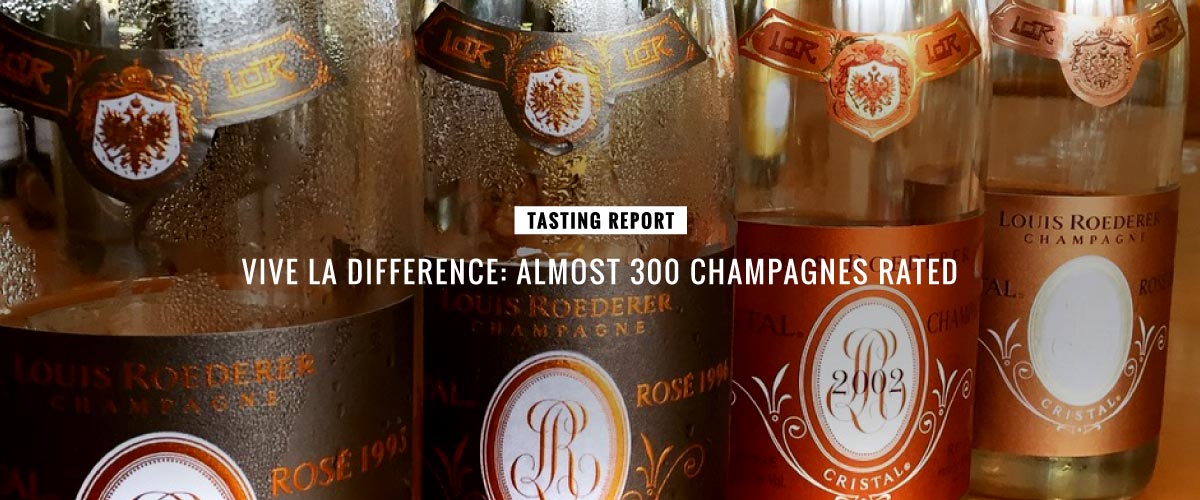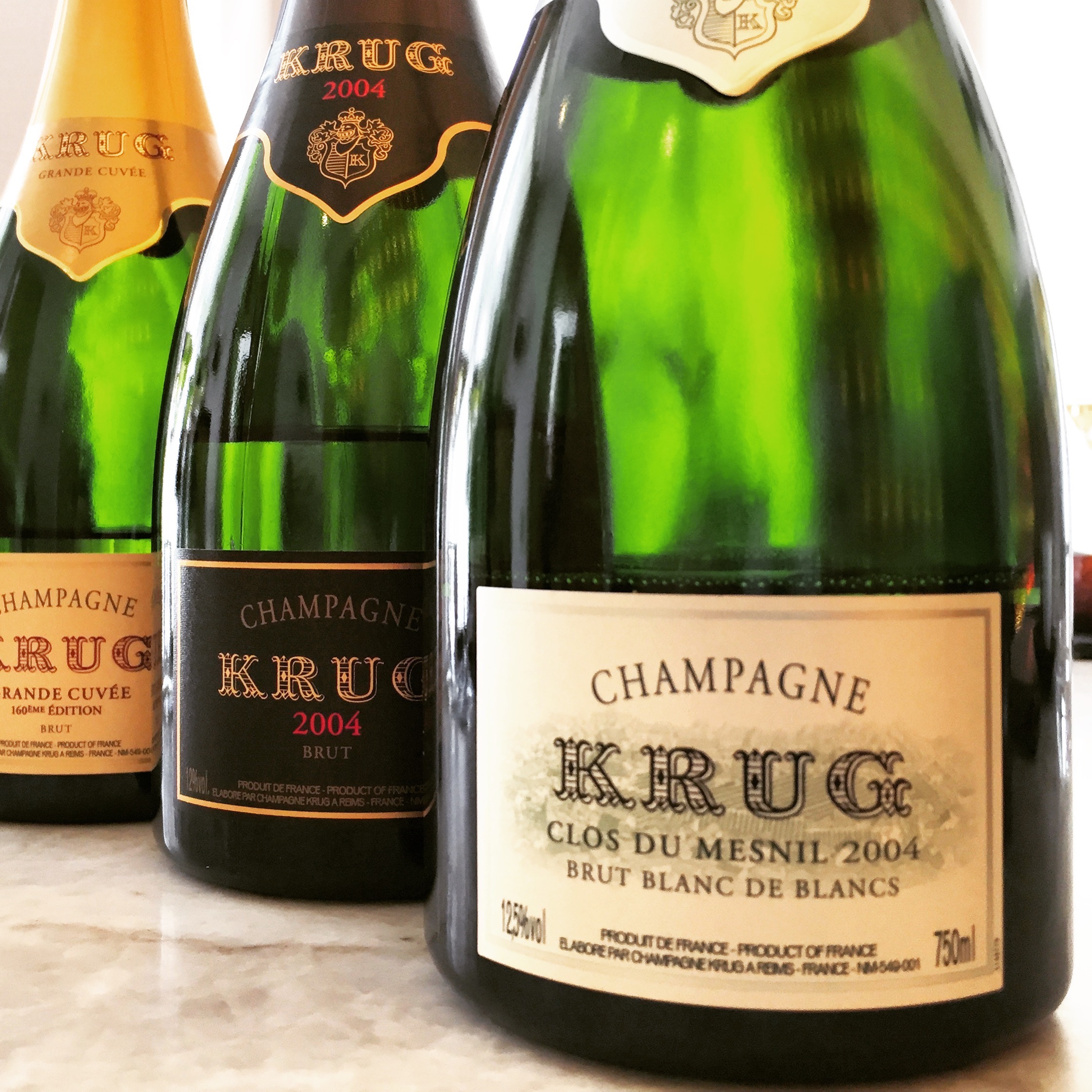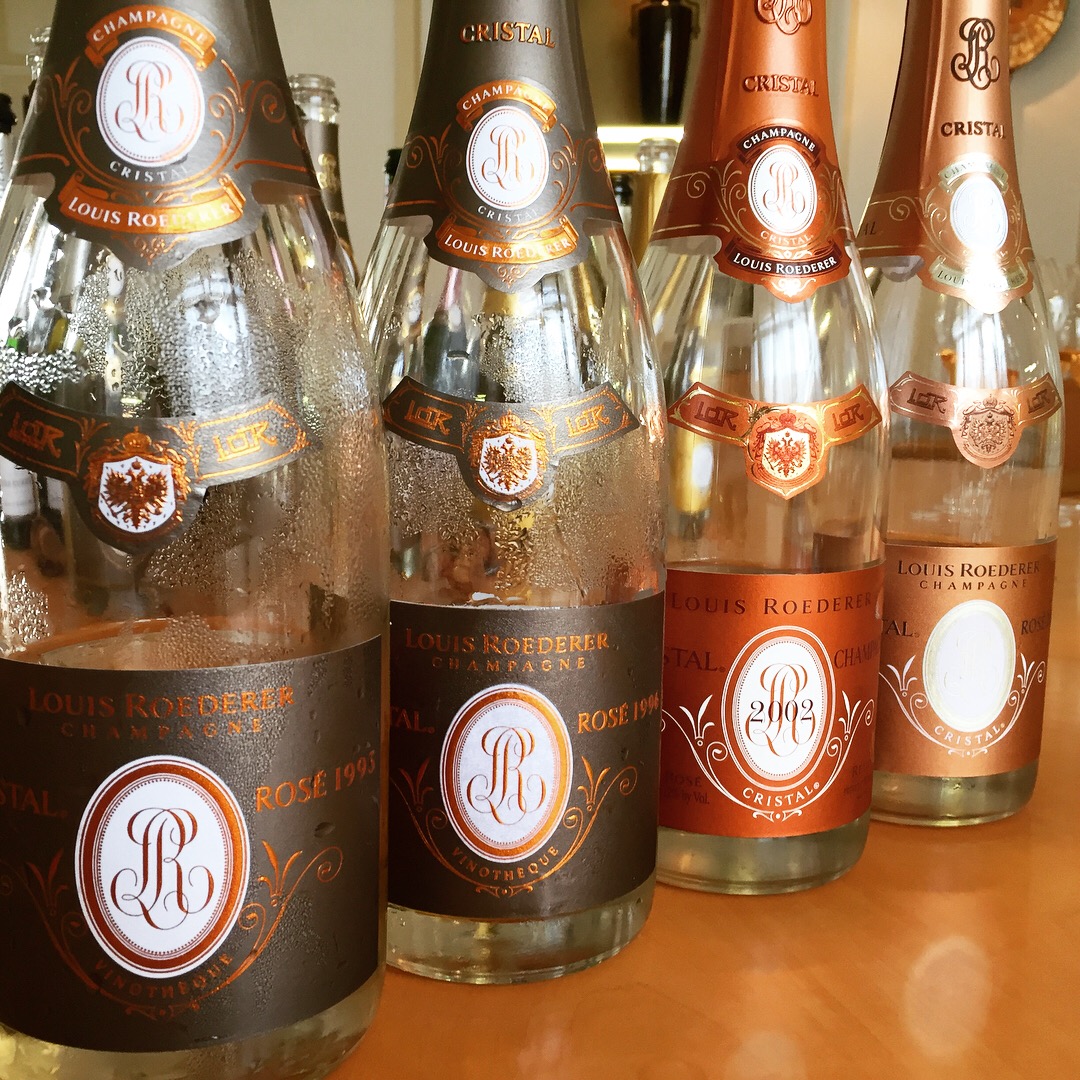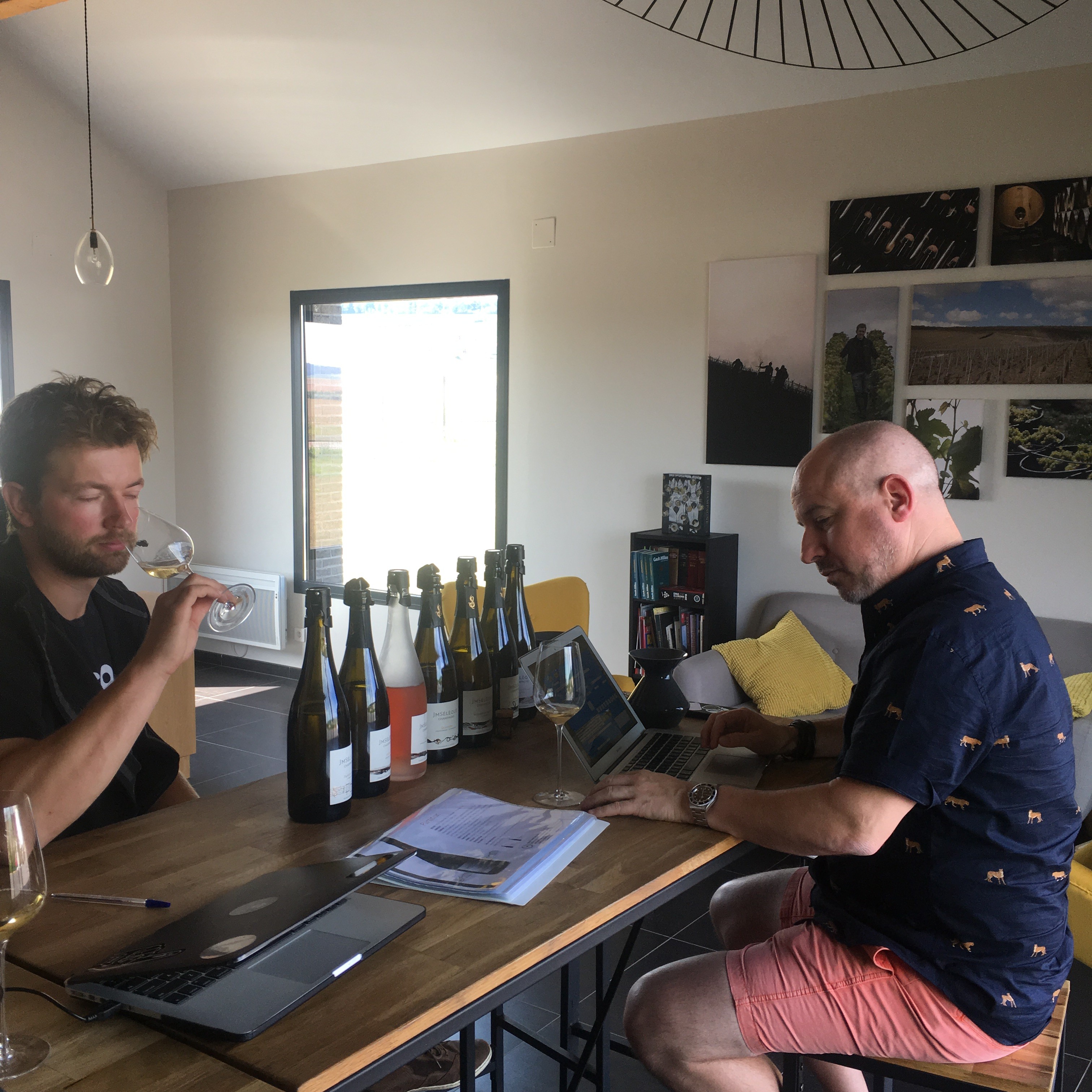Vive la Difference: Almost 300 Champagnes Rated

Champagne has always been a highly competitive sector of the wine world and that hasn’t changed; I doubt it ever will. But what has changed is the playing field and the rules of engagement. Whereas once it was a battleground of sheer quality or price point, today’s skirmishes are decided less in terms of traditional commercial attributes and more along lines of interest, imagination and personality.

Krug’s 2004s show vibrancy and freshness. The Clos du Mesnil is one of many fabulous blancs de blancs in this report.
We tasted more than fifty Champagne producers for this year’s report, discovering much in the way of captivating, high-quality Champagne covering almost every possible stylistic angle. That such diverse quality is emanating from this region means there is still plenty to investigate, be it in familiar or unfamiliar territory. And whilst simple tradition doesn’t really pass muster these days in Champagne, classicism is certainly not dead. It is alive and well, elevated to artful reverence by the best producers.
Consider the Dom Pérignon 2008, for example. This classical icon is one of the most important releases this year and hotly anticipated after the 2009 — the younger, riper year being released non-sequentially in May 2017. It might just be the best DP since 2002. Delivered in a very powerful yet restrained style, it’s a wine that offers stunning purity in a sleek, elegant package. The Dom Pérignon 2008 is razor-sharp, super fresh and will reward those with the mettle and foresight to put it away until 2025. The potential is breathtaking.
This release also accompanies the passing of the chef de cave torch from Richard Geoffroy, who commenced in the role in 1990, to Vincent Chaperon, who has worked alongside Geoffroy since 2005. There will be a commemorative, Dom Pérignon “Legacy Edition” 2008 released in the latter half of 2018 bearing both their names on the label and the “standard” release will come out in early 2019. Collectors take note.
The procession of great Champagnes from the 2008 vintage is already considerable, though many are yet to emerge from their cellars. Bollinger will release their La Grande Année 2008 next April and the mind bends at the thought of what producers such as Salon and Krug must still have in store from the 2008 harvest.

Following Louis Roederer’s dazzling Cristal 2008, the JamesSuckling.com team had the chance to taste the 2008 rosé edition. We also sampled the coveted Cristal 1995 and 1996 Vinotheque bottlings.
Louis Roederer’s dazzling Cristal 2008 (rated in last year’s report) is joined by the rosé from the same vintage and is every bit the wine you would imagine. Possessing all the scintillating perfection of Cristal 2008, the rosé is a step towards an even more silken, almost gossamer texture. It is sublime. And if that weren’t impressive enough, there are a few precious bottles of Cristal Vinotheque 1996 and Cristal Vinotheque Rosé 1996 to be released, both of which are reviewed here. These join the pair of 1995 Vinotheques released in late 2017 and live up to the pedigree of the 1996 vintage and the original releases of these two stellar Champagnes.
From 2007 come two excellent blancs de blancs in the form of the exceptionally consistent Salon Blanc de Blancs 2007 and the Taittinger Comtes de Champagne Blanc de Blancs 2007, which outdoes the already excellent 2006. The Salon is a racehorse with sleek lines powered by stoney, chalky and other salty mineral flavors, whilst the Comtes de Champagne plays a more luxuriant, complex and generous game. Both are excellent in their own right. Add to these the complex and chiseled Krug Clos du Mesnil Blanc de Blancs Brut 2004, and there’s plenty in this report for the chardonnay purists.
One of the highlights of this year’s schedule was a visit and tasting with Fred Savart of Champagne Savart. Having studied in Avize, he was drawn to the richer and more complex barrel-influenced Champagnes of Bollinger, Krug and Selosse and, when he returned to the family business in 2005, he set things on this new path. Savart’s style is profoundly expressive, and the diamond-like clarity he achieves in all he does is striking. Seek these Champagnes out.
My tasting with Jean-Marc Seleque was keenly anticipated. Having already been captivated by the skilled creativity intrinsic to these Champagnes, the chance to visit Sélèque and taste at his family’s modest cellar in Pierry was an opportunity to explore the inspiration behind the bottles. This arm of the Sélèque family has eschewed conventional farming and moved to organic vineyard practices as well as dramatically lower yields, both of which underpin the typicity of their Champagnes.

Our contributing editor Nick Stock tasting with Jean-Marc Seleque.
“The problem today is you can be an owner and make Champagne without knowing how to do it or even setting foot in any vineyard or winery,” explains Seleque as we first explore the excellently refreshing non-vintage Solessence, a blend of 50% reserve wine and 50% 2015 vintage material. These are truly artisanal Champagnes, tended carefully from the vineyard through the cellar and into bottle. They are also wonderful examples of good-value fine wines for this often-exclusive region.
Sélèque’s non-vintage Quintette is a five-parcel blend of chardonnay from 2012 with 20% reserve wine added, and this is where the creative genius really starts to flourish. It culminates with the Partition 2012, which combines seven parcels to deliver a thrilling adventure in complexity, hair-raising precision and purity. Watch for a late disgorgement of the inaugural Partition 2008 — out on the market from April 2019.
The ascendancy of Agrapart & Fils has been a stellar journey to follow and, again, the skillful execution of carefully conceived ideas is what makes these Champagnes stand apart. From carefully expressing a single parcel, as in the case of the excellent Vénus Brut Nature 2012, all the way to tackling the complex matrix of the twin-parcel and twin-vintage assemblage of five varietals in the Complantée Extra-Brut, Pascal Agrapart’s prowess as a winemaker shines through.
Any way you like it, Champagne is ahead of the game, offering you a myriad of styles to follow from producers large and small, old and new. Enjoy discovering them all in our 2018 Champagne tasting report! — Contributing Editor Nick Stock